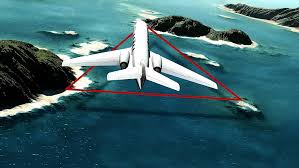The evolution of ships has been a fascinating journey through history, and one of the most iconic and essential parts of traditional sailing vessels is the mast. Though modern vessels have undergone immense technological advancements, the mast remains a recognizable feature of many ships, both old and new. Whether on a centuries-old galleon, a sleek racing yacht, or even modern naval ships, the mast plays a crucial role in a vessel’s structure and function.
Defining the Mast
A mast is a tall, vertical or near-vertical pole that rises from the deck of a ship and supports sails, rigging, lookout points, navigation equipment, communication systems, and sometimes radar antennas. In sailing ships, masts are integral to the propulsion system, holding the sails that capture wind and drive the ship forward. On motorized or modern ships, while masts no longer serve the purpose of supporting sails, they still serve important functions such as holding radar arrays, flags, lights, and other equipment.
Types of Masts
Throughout history, various types of masts have been used depending on the ship’s size, purpose, and design. Here are the major types of masts commonly found on traditional sailing ships:
-
Foremast: Located near the front (bow) of the ship.
-
Mainmast: Typically the tallest mast, positioned near the center of the vessel.
-
Mizzenmast: Located aft (toward the stern) and usually shorter than the mainmast.
-
Jiggermast: On some four-masted ships, this mast is placed behind the mizzenmast.
Smaller vessels such as sloops or cutters generally have only one mast, while larger ships like brigs, barques, and clippers might have multiple masts.
Structure of a Mast
Traditionally, masts were constructed from single large logs of timber, such as pine or spruce. These wooden masts had to be strong yet flexible to withstand the forces of wind and waves. With the advent of modern shipbuilding, masts are now often made from aluminum, steel, composite materials, or carbon fiber (especially in high-performance yachts).
A typical mast may consist of several sections:
-
Lower Mast: The base section that is stepped (secured) into the deck or keel.
-
Topmast: An extension mounted above the lower mast to increase height and sail area.
-
Topgallant Mast: Yet another extension above the topmast, used in tall ships.
-
Truck: The topmost part of the mast, often used as a mounting point for flags or lightning rods.
Function of the Mast
1. Sailing and Propulsion
In traditional sailing ships, masts are critical for sailing. They support the sails, which catch the wind and convert it into forward motion. Without masts, these ships would not be able to move efficiently. The positioning and height of the mast determine the size and type of sails that can be used, directly influencing the ship’s speed and maneuverability.
2. Support for Rigging
The mast is a key anchor point for the rigging system. Rigging includes ropes, wires, and cables used to control the sails and support the mast itself. There are two primary types of rigging:
-
Standing Rigging: Permanent lines that support the mast laterally and vertically.
-
Running Rigging: Lines that are used to hoist, lower, and adjust the sails.
3. Observation and Communication
Historically, masts served as platforms for lookouts. Sailors would climb to the “crow’s nest,” a small platform partway up the mast, to spot land, ships, or hazards. Today, masts often house radar, GPS, antennas, signal lights, and flags for communication and navigation.
4. Symbolic and Ceremonial Role
Masts also play a symbolic role. Flags are flown on masts to denote nationality, rank, or status. On naval ships, ceremonial functions like raising or lowering the ensign or national flag are performed using the mast.
Masts in Modern Ships
With the transition from wind-powered sailing ships to diesel and nuclear-powered vessels, the role of masts has changed significantly. Today, most commercial and military ships use electronic navigation and communication systems, many of which are mounted on the mast. These ships no longer require sails, but the mast still remains crucial for operational purposes.
For instance, naval ships feature masts equipped with sophisticated radars, antennas, and electronic warfare equipment. These masts are often designed to reduce radar signature and may be integrated into the ship’s superstructure (as seen in stealth warships).
Cruise ships, cargo ships, and tankers may also include masts, mainly for navigational lights, fog signals, and communication devices.
Engineering Challenges
Designing and installing a mast on a ship is a complex task. It must be:
-
Strong enough to withstand high winds and the tension from rigging.
-
Flexible enough to absorb the motion of the sea.
-
Lightweight to avoid making the vessel top-heavy.
-
Corrosion-resistant, especially in marine environments.
Material choice, placement, and integration with the hull and deck are all vital considerations in mast engineering.
Conclusion
Though its form and function have evolved over centuries, the mast remains one of the most important and recognizable features of a ship. From supporting the sails that powered the Age of Exploration to holding cutting-edge radar systems on modern naval vessels, masts have played an indispensable role in maritime history and technology.
Understanding what a mast is ship—and what it does—offers insight into not only the mechanics of sailing but also the evolution of maritime design. As ships continue to adapt to new technologies, the mast, in one form or another, is likely to remain an enduring part of the maritime landscape.
